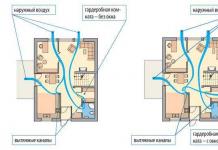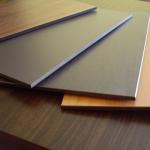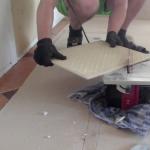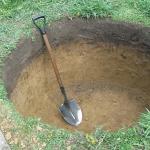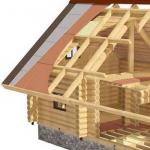Porcelain tiles are used for cladding interior and exterior coatings. The durable structure of the material far exceeds the characteristics of ceramics. To perform installation, you need to know how to cut porcelain tiles at home. You don't need professional equipment for this. Let's take a closer look at how to prepare and competently cut practical material.
Preparation
In terms of structure, porcelain stoneware can be compared to natural granite and ceramics (hence the name). The material is hard and durable, so manipulating it requires a certain tool.
Before work, regardless of the chosen tool, be sure to check its serviceability. This applies to the cutting parts, as well as how well they are sharpened. If the tool is powered by an electrical outlet, be sure to check that the contacts are intact.
There are two types of tile cutting: straight and figured. Use mechanical or electrical tools:
- Bulgarian;
- jigsaw;
- glass cutter;
- mechanical tile cutter.
Cutting is performed by notching or splitting (depending on the tool).
Cutting with a jigsaw
How to cut porcelain tiles using a jigsaw to cope with a large amount of work?
The jigsaw has a very durable cutting part (blade). The blade can withstand elevated temperature loads, which is important for cutting durable, heavy materials. The process of cutting porcelain tiles is performed as follows:
- Mark a circle on the work surface with a marker;
- use a drill to drill a hole in the center of the circle, which is used to install a jigsaw cutter;
- cutting occurs along marked sections.
To avoid breathing dust while working, try periodically cooling the material being processed. There is a video below on how to cut porcelain tiles step by step.
We use an angle grinder
The grinder is a serious instrument. Please note that when using it there will be a lot of debris. You should also observe safety when working with electric tools (glasses, gloves). To prevent injury from shrapnel during operation, a special protective cover should be included with the angle grinder.
To perform the cut you will need a special diamond disc (attachment). The work is carried out as follows:
- cutting takes place on a flat surface;
- draw a cut line;
- a cutting disc is drawn along the line;
- It is advisable that the cut be made the first time so that there are no chips.
Try to keep your movements precise and neat.

Other tools
Which tool to choose with which to cut porcelain tiles depends on financial capabilities and specific preferences. Despite the very durable structure of porcelain stoneware, it can be cut not only with electric tools. For example, you can do this with a tile cutter:
- it is necessary to mark the cutting line;
- tiles are fixed into the tile cutter, which is a platform with two rails;
- You need to cut with little effort, moving away from you.
You should know that cutting porcelain stoneware with a tile cutter is quite difficult. It takes a lot of effort. In cases of emergency, it is still possible to cut porcelain tiles at home with a tile cutter.
The question about whether it is possible to cut ceramic tiles with a jigsaw will be in the affirmative. But, it is easier to get the job done with an electric jigsaw. The method differs from working with a mechanical tool:
- in the process of sawing hard materials, water is supplied (wet method);
- thanks to the fluid supply, the amount of dirt during operation is reduced;
- you need to mark a line for cutting;
- the material is placed under the cutting disc;
- The material must be fed under the cutter slowly, holding it firmly.
Important: the wider the porcelain tile, the stronger the pressure should be when working with a jigsaw. Correctly applied efforts will help to cut porcelain tiles without chipping.
Cutting with a glass cutter
Cutting porcelain tiles can be done with a regular glass cutter. This is possible if the amount of work is very small.
The main condition in this process is the diamond cutting part of the glass cutter. The job description is as follows:
- before cutting, the ceramics should be soaked in water for half an hour (it will be easier to cut);
- remove the material from the water, place it on a smooth, flat surface for further processing;
- the incision is made only once with considerable effort;
- use a roller glass cutter to walk along the cutting line (in the direction from the farthest mark towards you);
- a groove (crack) will appear on the surface of the porcelain stoneware;
- To make it easier to break, you can lay a wire or match on the line.
The last stage is breaking the tiles by pressing on both sides.

Special equipment
The process of cutting porcelain stoneware is considered complex. Special equipment is used for cutting granite tiles. These are machines that can handle any hard and durable material (granite, concrete stones, marble). The equipment is quite lightweight, so if necessary, it can be purchased for personal use.
Modern machines for processing granite tiles are compact and reliable. With their help, you can perform voluminous work. For example, custom-made porcelain tiles are cut on hydraulic cutting machines. Staircases and baseboards are made from durable material.
When cutting your own home, it can be difficult to decide what to cut porcelain tiles with. The optimal, inexpensive and simple option is cutting with hand tools without special professional skills.
The main thing when cutting is to follow the following rules:
- apply significant effort when working;
- to avoid chipping, try to complete the first scratched layer in one go;
- before breaking off the sawn part, place the material so that it protrudes slightly beyond the line of the working surface;
- you need to break the tiles with a quick, sharp movement;
- if the first cut is made correctly (deep), then there will be no problems with breaking.

Regardless of the tool chosen, cutting porcelain tiles is carried out almost according to the same pattern. First, the cut line is marked with a marker. Then, using pressure, it is carried out with the cutting part of the selected tool. And at the final stage, the tile is broken along the drawn and processed line.
If you use an electric cutting tool, be careful and careful. Place a sheet of plywood under the work surface to avoid damage. Fix the tile securely and hold the tool firmly in your hands.
Take your time - make a light first cut. Use protective equipment. During the work, pieces of granite tiles may break off. Therefore, do not remove protective covers from electrical tools, cover your eyes with goggles, and cover your hands with gloves.
Mark the cut line on the front side. The tiles in the tools are also installed from the face.
The cut is always made away from you. If electric cutters are used, the cut lines should be periodically sprayed with water. This will reduce the amount of dust. In any case, it is recommended to wear a respirator.
Choosing a method for cutting porcelain tiles is not an easy task. Some advise choosing laser cutting, others - manual or even cutting with a glass cutter.
There is also debate as to whether the wet or dry method is better. Therefore, before starting work, you need to study the nuances of each cutting method in order to choose the most suitable option for you.

Peculiarities
The main feature of porcelain stoneware is that it is durable and hard. In terms of hardness, it can be compared to natural stone, although porcelain stoneware itself is not a natural material.

Porcelain tiles are used for finishing both residential and non-residential premises. They are used to cover floors and walls, as well as building facades.
Another feature of porcelain stoneware is its environmental friendliness. It consists of materials that are completely harmless to human health. The next feature is its fire resistance. It is not exposed to fire, and also does not fade from exposure to ultraviolet radiation. Porcelain tiles are divided into classes according to their wear resistance, which also affect the quality characteristics of individual types of porcelain tiles.

Porcelain stoneware is a durable material that can be used for a century. During use, it practically does not crumble or scratch and is resistant to external damage.

But with all these advantages, it has one characteristic feature that can be called a disadvantage - it is quite difficult to cut it with your own hands.
In domestic conditions, cutting porcelain stoneware can only be done using special devices and tools. Cutting porcelain tiles is a necessary step in the process of its installation and installation. After all, it is impossible to choose ideally sized slabs that will clearly fit into the surface of the floor or wall. Therefore, the outer elements often have to be trimmed.
In addition, the peculiarity of cutting is that it allows you to adjust the slabs to the shape you need. Some porcelain tile models do not undergo rectification. This procedure means factory trimming and giving the material equal edges.

Non-rectified porcelain tiles are much cheaper, since there may be a slight difference between the slabs, even those in the same batch and in the same package.
By purchasing such porcelain tiles, you can save significantly, but you will have to cut them. This way you can remove extra millimeters from the edges and make the slab perfectly flat for easier installation.

With the help of some tools, you can not only carry out high-quality cutting of porcelain stoneware, but also even cut out unusual shapes and ornamental elements that can form a whole work of art.
This way the floor coverings will look fascinating. But to do this, you should study all the options for cutting porcelain stoneware and the rules for carrying out this process. It is also necessary to study all types of cutting tools.

What can I use?
Mechanical manual tile cutter
This is the most popular tool and is great for cutting porcelain tiles. In general, such a tile cutter is designed for different materials in composition, but models designed for cutting porcelain stoneware are distinguished by their high power and durability.
Mechanical tile cutter includes:
- bed;
- guides in the form of rails;
- driving roller;
- special paws.

The last element is designed to break the tiles. The most popular model of such a tile cutter is a bearing machine with two guides.
A mechanical tile cutter should only be used to cut tiles in straight lines. It cannot be used to make curved cutting. An exceptional option is the L-shape, but doing it manually is not so convenient.
In order to carry out such cutting of porcelain stoneware, it is necessary to carry out the following steps:
- First of all, the boundaries along which you will cut are marked.
- Then it is necessary to install the porcelain stoneware slab on the tile cutting machine so that the marks are placed under certain elements: one - under the central part of the bed, the other - directly under the cutting roller.
- Then you need to move the roller from one marking to another. Moreover, it should be carried out with uniform pressure. You should move quite quickly. Moreover, this can only be done once, since the second cycle can lead to defects and broken tiles.
- After this, you need to press your paws on the place where the cut was made.

It is important that the roller is as sharp as possible. This is the only way to make a perfectly even cut without chipping. Before cutting porcelain tiles by hand, check that the runners are well lubricated. Otherwise, using this device will be much more difficult.
A manual tile cutter has a big disadvantage - over time, play appears in the guides. This may cause unevenness and chipping during cutting. Some resort to tightening the bolts required to secure this system. But strong tension can lead to unevenness at the edge of the cut. This porcelain tile can be used only if its cut is covered with wall tiles or hidden using baseboards.

There are more expensive and high-quality tile cutters. These include monorail models. They are quite large in size and therefore are completely unsuitable for cutting porcelain stoneware at home.
Hand tools have only a few small advantages:
- With its help, you can quickly cut slabs at home, spending a minimum of effort.
- You can save money because you do not have to contact specialists for cutting.
But usually the edges cut in this way are not very smooth, so they have to be hidden. Some models of manual tile cutters have special templates. By placing them on porcelain tiles, you can cut the tiles evenly and avoid wasting time on marking.


Electric tile cutter
It is an electric machine, which generally has a similar type of operation as a mechanical tile cutter. But with its help you can make a better cut. Besides it can be used for absolutely any type of porcelain tile, including for the thickest and densest elements. This will not affect the quality of work in any way.
An electric tile cutter can accurately cut even the thinnest porcelain tiles. It doesn't chip corners and leaves a perfectly straight cut.. A mechanical tile cutter, on the contrary, is more likely to ruin such tiles than to cut them smoothly.




An electric tile cutter requires a longer cutting procedure, but the quality of the tiles will be high. These devices have a high price. But it is determined by the quality of cutting and the external presentability of the result of the work.
The electric tile cutter includes:
- camp (often its role is played by a table);
- guides;
- diamond wheel, which acts as an element for cutting;
- electric motors;
- water system.

The peculiarity of cutting with a diamond wheel is that it spreads a large amount of dust from porcelain stoneware, so the device is equipped with an additional water system. It cools the cutting elements and prevents dust from flying away. This model has an automatic water supply system.

But water systems can vary. In some models, the system consists of a container of water in which the diamond wheel is partially immersed throughout the cutting process. Another option involves periodically wetting the circle with water with your own hands.

In any case, the fluid in this system must be replaced during the cutting process. so that dirt does not accumulate and the diamond wheel does not deteriorate. In addition, after finishing work, the diamond wheel must be well treated and washed thoroughly so that the cutting particles do not become clogged.

Electric tile cutters may differ in the type of cutting. It directly affects the way it works and has certain features:
- Some models of tile cutters involve moving only the diamond wheel. In this case, the table remains completely motionless.
- Other models, on the contrary, require complete fixation of the cutting elements, and the tiles in such a machine are moved using a moving mill. But at the same time, the quality and speed of trimming does not change and remains at its best.


An electric tile cutter differs from mechanical and manual models in that it provides for shaped cutting of porcelain tiles. But this machine cannot make rounded shapes and sinuous lines. The mechanism is capable of only angular cutting.
In addition, this device can cut tiles at an angle of 45 degrees. This is a more convenient way that allows you to control the cutting process.

Some people prefer to cut porcelain stoneware using an angle grinder. It is an excellent solution if you do not have the opportunity to purchase a special cutting tool for tiles.
Bulgarian
With its help you can cut porcelain tiles of any shape and size. In addition, you can do additional grinding at an angle of 45 degrees. But for an angle grinder, in this case, you should purchase a diamond disc with a smooth surface and without holes. This type of blade is suitable for cutting porcelain tiles. The big advantage of this type of cutting is the availability of this tool. An angle grinder is found in almost every home.

In addition, with this device Can be used for shape cutting. Since the hand tool has high mobility, almost any pattern can be made. You just need to have the required level of skill. In addition, everyone who does home renovations with their own hands has the skills to use an angle grinder. Therefore, the procedure for cutting porcelain tiles with a grinder will not cause any difficulties and will take very little time.

But this method has a number of disadvantages. Cutting with a grinder involves a lot of noise and a lot of dust. Cleaning up after such cutting will be inevitable. In addition, an angle grinder is a dangerous tool. If you are careless or inattentive, injury may result.
Some craftsmen also call the possibility of poor-quality cutting a disadvantage. Since this machine is not specifically designed for such a process, the cut may not be of high quality, and the cutting will not be professional. If the grinder is already old, then the possibility of chipping and the likelihood of small cracks appearing in the texture of porcelain stoneware increases. That is, the risk of damaging the coating will be most likely.

But still, with such cutting, additional grinding occurs, so the sides are partially aligned. Trimming with a grinder is carried out only in cases where the porcelain tiles in the cut areas are hidden by other coatings or baseboards.
In order to carry out such cutting, you must follow the instructions:
- First you need to mark the cutting line.
- When cutting, you will need to move not strictly along the line, but by retreating 2-3 mm in a larger direction. This is due to the fact that the diamond wheel removes the excess part of the slab.
- During the cutting process, the diamond wheel should be positioned in the direction of movement of this entire mechanism. Typically, the cutting elements have an arrow indicating the direction for installation.
- Movements during cutting should only be in one direction. Moving in different directions will increase the likelihood of chips and cracks. But thin slabs of porcelain stoneware, on the contrary, need to be cut differently - smoothly moving back and forth. This way you won't damage or break the tiles. The main thing is not to move too quickly.
- Before each cycle of cutting porcelain tiles, it is necessary to further process the diamond wheel to ensure a high-quality result. It is necessary to walk the cutting link over the brick several times. This way you can remove excess dirt and accumulated dust from the surface of the diamond wheel.

Waterjet
It differs in that it allows you to create complex designs and patterns. This will make the flooring more interesting and sophisticated. Water cutting allows you to process tiles using a variety of patterns. If your floor design includes winding lines or patterns, then even a manual grinder will not suit you. You can ruin all the slabs with one wrong hand movement. Thus, For shape cutting you must use only waterjet.
This tool is only used in workshops specially equipped for this process. This method of cutting porcelain stoneware involves cutting using a jet of water mixed with small abrasive particles. Moreover, the jet is thin, less than 0.5 millimeters. The jet is fed into the nozzle of the machine under enormous pressure.

Modern systems have a computerized type of control, which allows you to cut any, even complex, pattern. Moreover, it is possible to cut porcelain stoneware even up to 20 cm thick.
Waterjet cutting is done only by craftsmen who know their work. The tool is quite expensive, but the result is always impressive, because you can even make a relief cut or create a panel.

A circular saw
Also often used at home. With its help you can easily cut porcelain tiles in a straight line. But in this case, you cannot use a toothed disc. It needs to be replaced with a diamond type model. Cutting porcelain tiles in this way is similar to cutting wood. You need to hold the plate and move it towards the cutting disc.
Cutting with a circular saw should only be done if you already have a marking. Porcelain tiles must be pressed against the working surface of the tool with both hands.
By observing safety precautions and caution, you can cut porcelain tiles evenly, but its edges will not be perfectly smooth.
Jigsaw with diamond wire
You can cut porcelain tiles at home using this device. This way you can do not only regular cutting, but also cut out interesting shapes and make winding lines. But for this you need to have some operating skills and be able to properly operate this tool.
Also it is necessary to draw the outline of the cutout along which you will subsequently move. When moving the jigsaw, you should carefully monitor the direction of the wire. As the wire moves, be sure to blow away dust from the surface of the tile.. This way the cut line will always be open. The thread will cut through porcelain tiles more efficiently, nothing will interfere with it.
For better cutting, the tiles must be pre-moistened. Pay special attention to the edges of the tiles, as this is where chips most often appear.

At home, it is best to only cut porcelain tiles along the edges. So, with the help of hand tools you can cut off the extra centimeter that interferes with installation, but figured cutting is a more complex process that will provoke the appearance of chips and cracks even due to small mistakes. Any cutting method requires a good grip on the tiles, no matter what tool you use.

When marking, use a marker and ruler. The marking should always be drawn on the front side of the tile; when cutting, it should be on top. But during the cutting process, always leave some free space so that you can then correct the edges.

You cannot cut all porcelain tiles according to one marking, since the floor parameters are not always equally even and ideal.
To simplify your work, first measure all the corners in the room. If they are exactly 90 degrees, then you can cut using a stencil along one marking. Now, if there are small deviations, then each time measurements must be made manually and markings must be applied to each element separately.

If the edge of the tile is not hidden under the frieze or baseboard, it must be further processed by sanding and leveling. During operation, the tile cutter should only be placed on a flat surface. When using manual cutting methods, you should also get a level table where you will place all the cutting elements.

Manual cutting assumes that there will be a distance of at least 1 cm from the edge. Otherwise, you will not be able to make straight lines; the porcelain tiles will begin to crumble and crumble. Therefore, it is important to indent with a margin so that the cutting is of better quality.
Porcelain stoneware has recently become increasingly popular and in demand among builders. This is due to its strength characteristics, as well as its unusual and beautiful appearance. However, a high level of strength also has a downside to the coin, since certain problems may arise when processing the slabs. In this article we will look at what technologies and tools exist for working with stone, learn how to cut porcelain stoneware and how to achieve optimal results at home.
Porcelain tiles - its unique features
Ceramic granite is an artificially created finishing material. A distinctive feature of the material is its excellent performance characteristics. And in appearance it is practically no different from natural stone. Having learned how to cut porcelain tiles at home, you will be able to independently cladding the facade of your house, as well as decorate residential apartments.
Previously, the material was used as tiles for installing floor coverings in rooms with a high level of load. Most often it could be found in public places, as well as in industrial workshops. Now porcelain stoneware can be found in any building, private house or residential apartment. The scope of use of stone has increased significantly, which was achieved due to the special properties of the material. Thus, consumers note the following positive qualities of porcelain tiles:
- High strength
- Fire resistance
- Long service life
- Hygiene
- Wear resistance and frost resistance
- Beautiful appearance and aesthetics
- Environmental safety of stone
- Antistatic
Tiles made from ceramic granite do not scratch even with serious mechanical damage, do not wear out during operation and do not crumble.
The main disadvantage of stone is, as already noted, cutting porcelain stoneware on your own. We’ll look at how to cut porcelain tiles at home and achieve optimal results in this article. Coping with this task will be very problematic, especially if you have to work with such material for the first time. However, difficult does not mean that it will be impossible to succeed in this event. Today, there are many technologies and methods, as well as tools that allow you to cut porcelain stoneware at home without the involvement of expensive specialists.
Ceramic granite - ways to cut it
So, tiles belong to the category of very durable materials, and accordingly, the requirements for its processing will also be very high. Processing is a rather complex process that requires not only some skills, but also experience and dexterity. First of all, you need to take care of the availability of available tools.

Cutting porcelain stoneware can be done in the following ways:
- 1. Mechanical tile cutter
- 2. Bulgarian
- 3. Electric tile cutter
- 4. Waterjet technologies
Unlike the first three methods, waterjet technologies are used mainly on production machines. This is a very noisy and complex process that requires electricity and water in large quantities. However, the advantage of this method is that it becomes possible to perform shaped cutting of porcelain stoneware. Now let’s talk in more detail about each method of processing porcelain stoneware at home.
Mechanical tile cutter - tool advantages
This is the fastest and easiest way to cut stone. A tile cutter is useful in cases where you need to quickly cut material to pre-measured dimensions, without resorting to any artistic refinements. A mechanical tile cutter allows you to meet the required parameters, but you won’t be able to make beautiful cuts or corners.
Material handling should be carried out using protective gloves and goggles to prevent dust and small fragments from getting into your eyes.
Among the advantages of the tool is a high accuracy rate. In addition, working with it is much easier than compared to other devices for working with ceramic granite. However, you should be aware of some features of working with a mechanical tile cutter. First of all, it is designed to work with ordinary ceramic tiles, which differ significantly in structure from porcelain tiles. For this reason, you must work very carefully so as not to damage the material and not get chips when breaking.

Experts advise you to listen to the following recommendations so that you do not encounter additional difficulties in the process of cutting stone:
- The tile must be held in your hands and not allowed to move or move, especially during the cutting process.
- The diamond wheel passes over the surface of the tile no more than once. Such movements must be performed very smoothly and carefully with the same force along the entire length of the cut.
- The lever should be pressed smoothly, but quite firmly, to avoid chips and other defects when breaking off
Let us also note that the formation of mechanical damage when processing with a tile cutter is a completely normal phenomenon. You can always use a regular grinding wheel to get rid of chips and other roughness on the surface within a few minutes.
Working with an angle grinder - features of the process
The grinder belongs to the category of universal tools that allow you to process materials of almost any strength. Naturally, porcelain stoneware is no exception. It is recommended to use special diamond-coated wheels. Such a circle will last an order of magnitude longer than its analogues, and it is also easier and more convenient to work with due to its durable and rigid structure.
The process of cutting porcelain tiles using a grinder is not very difficult. First of all, you will need to draw a line for the future cut with a pencil, marker or chalk. We firmly fix the source material on a stable surface. The diamond blade is mounted in the direction of movement. Immediately before cutting, you need to step back a little from the drawn cut line to make working with the tool as convenient and simple as possible.
It is necessary to press the grinder smoothly when cutting, but the force must be strong enough, otherwise you will have to repeatedly run the tool over the same place. This can lead to unpleasant consequences, as you may miss the previous line and cause irreparable damage to the tile. As in the case of a tile cutter, after work you can walk on the surface of the finished porcelain stoneware in order to remove chips and other consequences of stone processing.
Electric tile cutter - simpler and more convenient than other competitors
The main tool for working with porcelain stoneware is an electric tile cutter. This unit allows you to perform all the necessary operations faster and easier, and a high level of accuracy and almost complete absence of chips will be a pleasant addition to working with the machine. The tool includes two main elements - an electric drive and a working surface.
Today you can find on the market many different modifications of an electric device for cutting tiles. Devices with a fixed type of drive are very popular. In this case, you will have to feed the material under the cutting element yourself, which requires some experience in operation, as well as a maximum level of concentration.

If a safer design is required, then turn your attention to an electric tile cutter with a movable cutting device. In addition, this cutting method is somewhat safer and is perfect for beginners. However, the cost of such a device is significantly higher than other tools for processing porcelain tiles, which does not allow its use everywhere.
Among the main advantages of electric tile cutters are speed and ease of operation. With relatively little time, you can process large volumes of stone. A very important property is the almost complete absence of damage when trimming; for this reason, you do not have to additionally clean the edges. They turn out perfectly clean, even and smooth. Modern models are equipped with rotating mechanisms, thanks to which you can fix the cutting element at any angle to the surface.
With proper experience working with this device, you can even learn how to make curly cuts of various shapes. Another feature is the change in the speed of movement of the cutting disc at different stages of the process. So in the central part of the tile, the supply of material can be done a little faster, while at the beginning and end everything should be done carefully, slowly and smoothly. Cutting porcelain tiles at home using an electric tile cutter allows you to achieve the best results with the least amount of time and effort.
Porcelain stoneware processing technologies - how to get complex and beautiful shapes
Let us note how to cut tiles correctly in certain cases. For example, if you need to make a straight cut on a stone up to 10 mm thick, you can use the groove method, that is, make a through cut using any of the above tools. Next, you just need to break the stone along the cut line.

Pay maximum attention to working with the edges, since it is in these areas that mechanical chips can appear
When processing material up to 30 mm thick, the process is slightly different. In this case, a neat deep cut is made along the drawn line using a tile cutter or grinder. After this, the stone must be placed on a steel corner so that the cut is along the edge of the corner. Next, you will need to apply some force to carefully break the tile, after which all that remains is to clean the cut area.
If you need to perform shaped cutting of tiles, then this will not be possible without additional difficulties. A special feature is that the process is carried out using special equipment in workshops. The method of performing figure cutting itself is called waterjet. While almost anyone can make straight cuts, complex compositions, figures, elements of various panels, complex and beautiful profiles can only be obtained using the waterjet method.
This technology involves the use of special powders and water. Under enormous pressure, the resulting mixture is fed into the nozzle of the installation. The actual cutting of porcelain stoneware is performed with a thin jet. The cutting process is carried out as quickly as possible, the edges are very smooth and without the slightest chips, however, such a method will not be available to ordinary people. This service is available only upon request. But if you perfect the art of using an electric tile cutter, you can also achieve very good results.
In cases where it is necessary to make various holes in porcelain stoneware, for example, for faucets, sockets or pipes, you will need to purchase a fairly powerful drill and core drills coated with diamond. Drilling is carried out at low speeds, the force on the drill is carried out smoothly so as not to harm the stone. Periodically you will need to cool the drill, which will overheat very much when processing porcelain tiles.
As you can see, there is nothing overly complicated about processing porcelain stoneware yourself. By spending a little time and effort, you can get beautiful tiles of any size that will completely match natural stone in appearance.
Porcelain stoneware as a facing building material allows you to implement different design ideas: it is used to lay tiles on terraces, mount the surfaces of steps, and decorate facades, walls and floor coverings with it. Moreover, the ability to combine different textures and colors in porcelain stoneware allows you to create real masterpieces in the interior. However, in most cases, when working with porcelain stoneware, pre-processing is required, in particular cutting.
Since ceramic granite is a hard building material, its processing technologies require the use of special tools. At the moment, there are two directions in cutting porcelain stoneware: in a straight line And figure cutting. In connection with this classification, cutting technologies are divided, and consequently, the means of its implementation. To determine how to cut porcelain stoneware, you need to know the features of using existing tools that are used to solve such problems.
Cutting porcelain tiles straight
As a rule, when laying porcelain stoneware, it becomes necessary to subject the tiles to direct cutting. Since the dimensions of the area to be finished very rarely fit into the total size of all rows of tiles, it is necessary to trim the edges of the outermost elements. So, how to cut porcelain tiles?
Glass cutter

In general, it is not the most popular means for processing porcelain tiles, however for small amounts of work you can limit yourself to it. The tool is easy to use and cuts the tiles exactly where you place your hand. Its use is justified in cases where there is no point in purchasing a tile cutter to process a small number of tiles.
Advantages: cutting speed, affordability, ease of use.
Disadvantages: a glass cutter will not help if you need to process a large number of tiles. During the work process, the master must be in constant concentration, while ensuring that the cutting line goes exactly where it is needed.
Manual tile cutter

Uncomplicated and convenient a tool that allows you to cut off excess parts from the tile. The porcelain tile element is fixed in the device itself, after which a cutting wheel passes through it - as a result, the tile is broken into two halves.
Advantages: relatively inexpensive device, ease of use.
Disadvantages: with a manual tile cutter you cannot cut strips smaller than 0.6 cm. Often the edges have to be additionally processed with grinding materials or sandpaper.

Provided that it is used in accordance with all the rules, a “diamond” electric tile cutter can become quite serious equipment. The device allows you to perform perfectly straight cuts with smooth or slightly rounded sides, which cannot be said about its manual counterpart, which leaves sharp and broken edges. After making several cuts, it becomes clear to many novice craftsmen what is the best way to cut porcelain stoneware. Moreover, an electric tile cutter has advantages not only over a standard device, but also over other tools used when cutting tiles.
Advantages: high quality of processing, can be used for curved cuts, allows you to cut pieces less than 0.5 cm and, in general, copes with tiles of any hardness class, among which, undoubtedly, porcelain stoneware. The next indisputable advantage of an electric tile cutter is a neat and clean cutting procedure - all generated debris settles in a special container with water and is not spread throughout the room.
Disadvantages: the tool is not cheap, requires strict safety measures, and to prevent the blade from becoming dull, you need to regularly change the water in the tank.
Bulgarian

The grinder also copes well with straight cutting, which is capable of a series of figured cuts and parallel cuts. But, since this is a manual device, deviations during cutting cannot be avoided. Sometimes there are even edges with a jagged surface, which is impossible when working with an electric tile cutter.
To understand how to cut porcelain tiles with a grinder, it is worth noting that this cutting technology does not differ from that used when processing other materials. But in most cases, a diamond blade for dry cutting in relation to porcelain stoneware can only be used as an option for “rough” processing, although if perfectly smooth edges are not needed, then the grinder will come out on top in terms of cutting speed in processing ceramic granite.
Compared to an electric tile cutter, this device has the following advantages: the tool does not require special training from the technician before use and there is no need to constantly change the water.
Disadvantages: after cutting, a residue of dust and fragments remains. During operation, this machine requires protective elements, including a respirator, headphones and goggles. This is a very dangerous device, so cutting should be done carefully and carefully.
Shaped cutting of porcelain tiles
Hole saw

If you need to cut porcelain stoneware into straight lines, then the choice is quite wide, but with curved cuts it is a little more difficult. The scope of use of a hole saw equipped with a carbide tip also extends to porcelain stoneware. It is also used for creating rounded holes in hard materials such as cement tiles and stone. A hole saw can cut any quality of porcelain tile: soft or hard, but cutting tiles with a glazed surface is slow.
Advantages: the most effective option for obtaining round holes, working with various building materials. That is, if necessary and for performing specific work with porcelain stoneware, a hole saw will be useful.
Laying porcelain tiles is impossible without cutting porcelain tiles.
You cannot lay tiles on the floor or walls so that there is no free space around the perimeter of the surface.
These places have to be filled with strips that are cut off from whole products. It is also necessary to trim the slabs in places where communications are supplied. In addition to cutting the slabs, drilling may be required.
How to cut porcelain tiles? Different tools are used for cutting.
Professionals give the following advice to beginners: it is best to cut porcelain stoneware with a special device - a tile cutter, and if you don’t have one at hand, then with a grinder with a diamond disc.
How to cut porcelain tiles with a tile cutter?
The tile cutter allows you to cut porcelain tiles most accurately, quickly and efficiently. A tile cutting machine is a manual or electric device designed for cutting tiles from various materials: tiles, ceramics, stone.
Cutting porcelain stoneware at home using a tile cutter is the best option. To cut porcelain tiles with a manual or electric tile cutter, you will need to buy a special disc with diamond-coated teeth.
The edges of porcelain stoneware cut with a tile cutter are rounded and look very neat. Even figure cutting is possible on a high-quality machine.

But to create real artistic products from this material - mosaics, ornaments - the following are used:
- waterjet cutting of porcelain stoneware - the role of the blade is played by a stream of water with finely ground abrasive material added to it;
- laser cutting of porcelain stoneware - cutting is carried out by CNC machines equipped with industrial lasers with a power of 1 to 40 kW.
The household electric tile cutter is equipped with a retractable surface and a cooling device.
Discs and porcelain tiles must be cooled during cutting - this makes it possible to maintain the working qualities of cutting surfaces longer. The material and machine are cooled using ordinary water.
- the master must move the slab along the blade with even pressure, ensuring smooth and accurate pushing from start to finish;
- there is no need to press hard at the moment when the tile is just coming into contact with the blade, so that chips do not form;
- at the end of cutting, release the pressure to a minimum - this is required by safety regulations;
- When cutting porcelain tiles, you need to hold the tile with both hands by both edges so that it does not fall to one side.
Advice: before work, you need to wear safety glasses, since during cutting, fragments of porcelain stoneware and particles of the cutting elements of the disk may fly off.
The water in the pan needs to be changed more often, as dust and porcelain stoneware particles settle in it. Clogged water impairs the quality of cutting porcelain stoneware and leads to premature wear of the blade.
Cutting with a household manual tile cutter is just as comfortable as cutting with an electric one. The manual machine is small, has no cooling, and is inexpensive.
Cutting with a manual tile cutter is carried out as follows: porcelain stoneware is placed on a table with a rubber surface and a carriage with a blade is moved over it by hand.
Cutting porcelain stoneware cannot be done on every hand-held machine; there are especially durable models for this.
A manual machine can make straight cuts; some models are additionally equipped with a device for cutting round holes, but shaped or artistic cutting of porcelain stoneware is not possible on a manual machine.
Cutting with a grinder
Porcelain tiles can be cut straight with a regular grinder. It can also be used to make shaped cuts and parallel slots.
Since the grinder is a manual device, there are often deviations during cutting, to the point where the edge of the cut turns out to be jagged. In addition, cutting with a grinder rarely goes without chipping.
Therefore, if the quality of the cut is a fundamental condition, then you need to use not a grinder, but a tile cutter.
The advantage of an angle grinder is its speed of operation - it can “cut” porcelain tiles much faster than any other cutting device, manual or electric.
The main thing when working with an angle grinder is not to rush. The grinder has an increased risk of injury, so you need to protect your eyes, hands and face.
So, let’s look at how to cut porcelain tiles with a grinder correctly:
- The slab must be installed securely so that it does not wobble. To do this, you can lay it on the edge of the table, leaving part of it hanging over the floor, or lay it directly on the floor or ground, placing a board under one edge, etc.;
- draw a straight line on the slab with a pencil at the cut site;
- The grinder is held with one hand and the plate is held with the other;
- Having made a shallow cut from edge to edge of the slab, they begin to move the grinder in the opposite direction. This is how they pass along the cut several times, each time deepening it until the desired part of the tile falls off on its own;
- There is no need to press on the edge of the tile, trying to break it at the cut point - this will lead to chips;
- the slower you move the grinder, the smoother the cut will be;
- If necessary, the edge of the cut can be slightly sanded with sandpaper.
Various discs are used for cutting porcelain stoneware. A high-quality disc leaves a minimum of chips on porcelain tiles.
A regular diamond-coated dry cutting blade can be used when cutting porcelain stoneware if a perfectly straight edge is not needed.
A good result can be obtained by working with a Rapid disc with a thickness of 1.2 millimeters, since it is half a millimeter thinner than similar products. Husqvarna discs have high cutting quality.
Advice: if you need to cut a figure in the shape of the letter “L” from porcelain stoneware, then it is better to place the tile not on a hard, but on an elastic base - this will protect the material from cracking in the corner part of the figure.
As an elastic base, you can use a thick sheet of ordinary foam.
With some skill, you can even make semicircular cuts on porcelain stoneware with a grinder, although this will require time and effort.
If you don’t have a grinder in your house, not to mention a machine for cutting tiles, but you somehow need to cut and cut porcelain tiles, then you can use a glass cutter.
Porcelain tiles are cut with a glass cutter in the same way as glass:
- the slab is placed on the edge of the table so that part of it hangs over the floor;
- draw a line with a pencil;
- take a ruler and draw a glass cutter along the line;
- press on the edge of the slab with both hands, the desired piece breaks off.
Drilling porcelain stoneware
When finishing a room with porcelain stoneware from the inside, you cannot do without drilling the slabs. But this material is difficult to drill as it is very hard.
In addition, even small errors during drilling lead to the appearance of cracks. How can I properly drill a porcelain stoneware slab?
It is best to drill this difficult-to-process material with a powerful drill operating at low speeds.
A hammer drill and similar tools that work on the principle of chiselling are not needed in this case.
The drill is turned on at the lowest speed and a hole is drilled, pressing firmly on the tool.
It is important that the drill is perpendicular to the surface of the slab during operation. To maintain perpendicularity, it is convenient to use a special drill stand.
Tips for drilling porcelain tiles:
- before starting drilling, mark the location and determine the diameter of the future hole;
- if you need a hole wider than 6 millimeters, then drill first with a narrower drill, and then use a nozzle of the required diameter;
- The slab is drilled only from the front side, since the hole on the back side (where the drill will come out) will be chipped;
- in cases where it is necessary to increase the life of the drill, the hole can be drilled only 2/3 of the thickness of the material, and then pierce the remaining part with a sharp blow.
When working with porcelain stoneware, the drill quickly overheats, so add water to the crown and drill. The liquid flows down and cools the material and tool.
You can cool the drill while working with a well-moistened foam sponge by moving its edge towards the rotating drill.
You can take a regular drill, with a carbide or diamond tip. The quality of drilling does not depend on the quality and hardness of the drill - these characteristics only affect how long the drill itself will last.
There are special ring drills for cutting porcelain stoneware, which look like tubes with diamond dust sprayed around the edges.
Round holes with a larger diameter, for example, for a socket, can be drilled with a galvanized diamond core bit.
Such a drill attachment is inexpensive, but it is enough for only a few times, unlike ring drills, each of which can drill at least a hundred holes.
So, to cut porcelain stoneware at home you will need a grinder, you can also use a tile cutter, and if you only need to cut one or two slabs, then a regular glass cutter will do.
